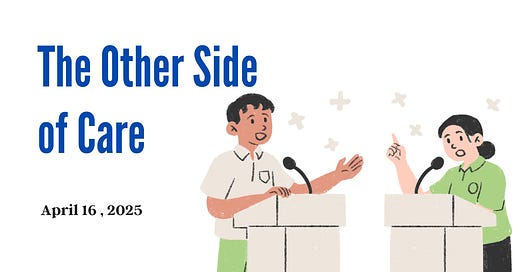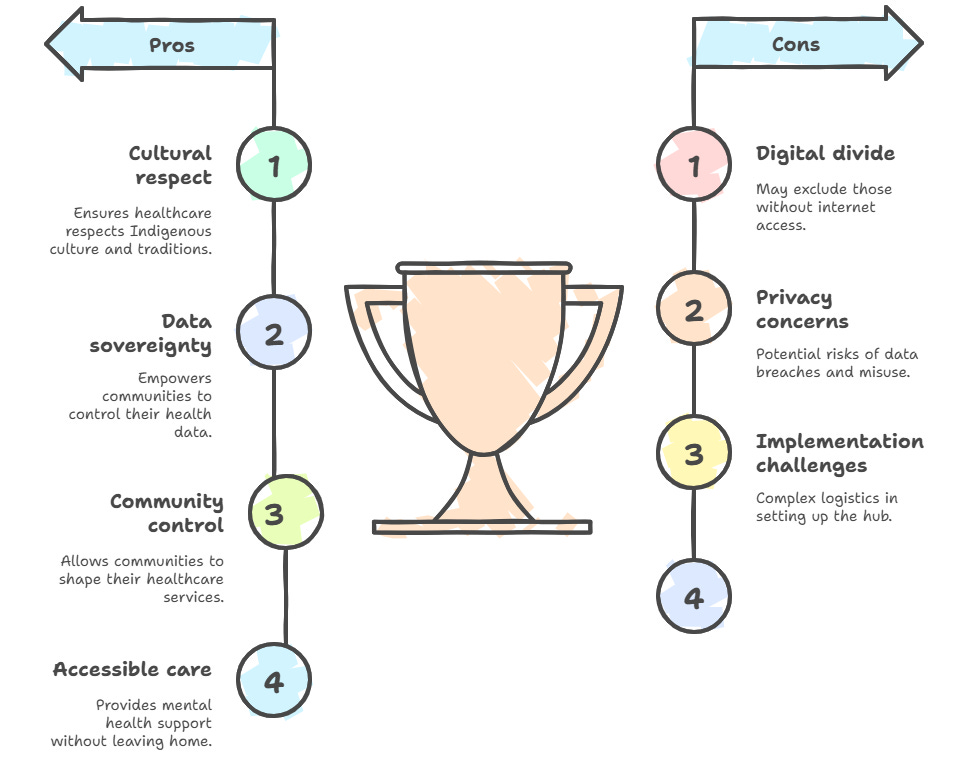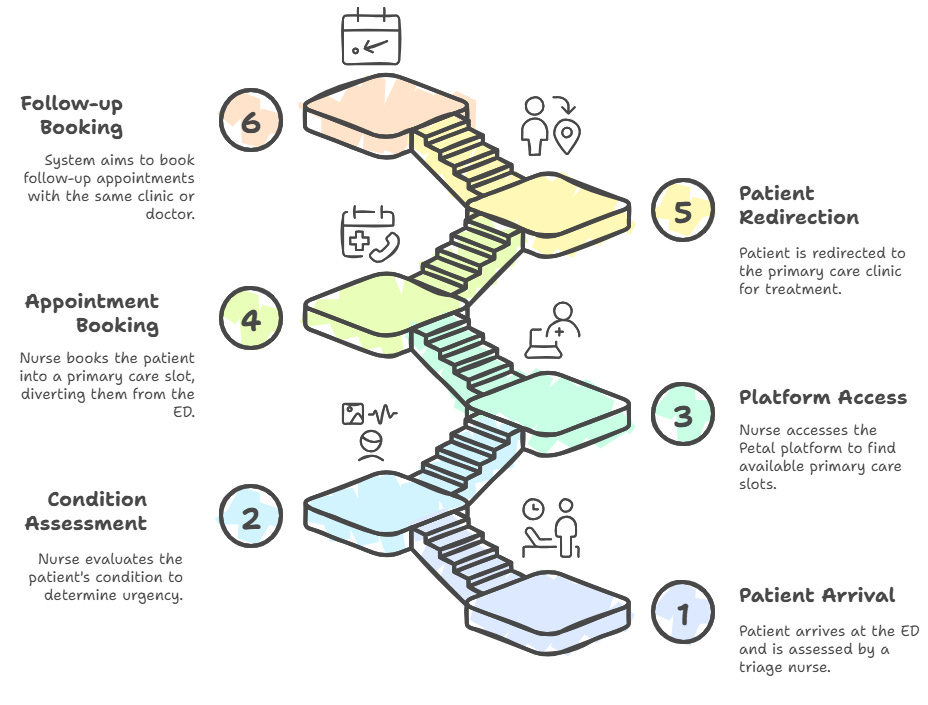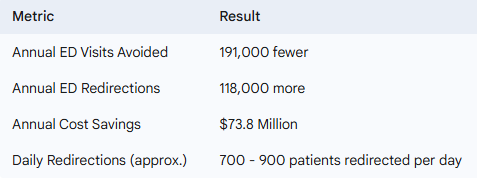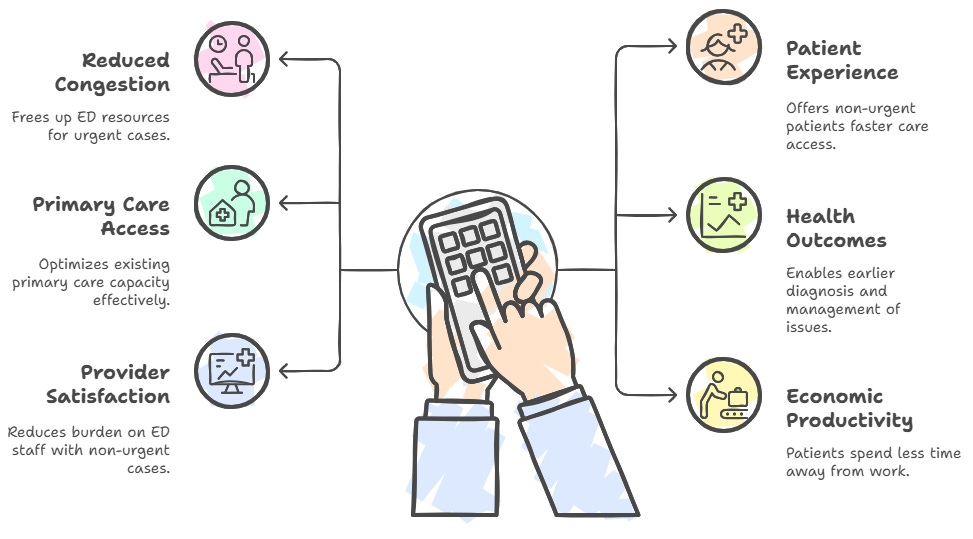
🗳️ Promises, Promises.....
Your Weekly Dose of Health Insights – Because Your Health Isn’t Just a Headline
Good morning, Other Siders!
Happy Wednesday! A huge, warm welcome to all the new faces who’ve joined our community in the last week – thrilled to have you aboard! Get ready for a whirlwind tour! We're diving into election promises shaking up healthcare (because who doesn't love political drama?), checking out some cool virtual care for Indigenous communities, peeking at the global stage with pandemic pacts, AND unpacking an amazing case study from Quebec showing how tech actually slashed ER wait times. Seriously, real-world magic!
As always, we're bringing you not just news, but actionable insights and real case studies you can apply. Because that's what we do at The Other Side of Care – help drive meaningful change. Facing your own complex challenges? Whether it's crafting a winning digital health strategy, transforming operations, or leading your team through change, our proven track record shows we deliver sustainable impact. We thrive on untangling the tricky stuff!
In today’s edition, we’re serving up:
Canada's Beat: Union Alarms | Election Promises
Digital & Global Currents: Indigenous Virtual Care | Pandemic Pact Progress
Deep Dive: Quebec's ER Fix: A Case Study
Dive in and enjoy the ride. 🚀
News that Impacts You!
Union Alarms Ring Loud!🚨
Unions basically held up a giant "HELP!" sign outside Nanaimo Hospital, warning the public system is in critical condition due to dangerous staff shortages, privatization creeping in, and political inaction. Imagine waiting months or years for surgery – yikes! For Canadians like Maria in rural BC, this means maybe no family doc and longer drives for essential care.
Are politicians actually listening this time, or is it just election noise?
Election Healthcare Promises Galore! 🤔
Politicians are throwing healthcare promises around like confetti as the federal election heats up! Liberals focus on recognizing foreign credentials, Conservatives push addiction treatment (cutting harm reduction funds), NDP wants universal pharmacare & family docs for all while fighting privatization, and others have their own takes. Think about it: your access to a family doctor or drug coverage could literally depend on who wins. Like choosing between different streaming services, but way more important!
What promise actually excites you?
Indigenous Virtual Care Hub! ✨
Forget generic telehealth! A new community-led "Virtual Health Hub" is being built with Indigenous communities in Canada, ensuring care respects culture and they control their health data, honouring data sovereignty principles. It’s like building a house with the homeowner, not just for them. Think of an Elder accessing culturally relevant mental health support online, without leaving their community.
How crucial is community control for trusting digital health?
Pandemic Pact Nears Finish Line! 🕊️
Remember the COVID chaos? World leaders are this close to signing a global WHO pandemic agreement after reaching consensus on principles like One Health and collaborative surveillance. Final text expected this week! But there's still drama over sharing the tech secrets for things like vaccines – should it be voluntary or sometimes mandatory? Imagine agreeing to share recipes, but arguing over Grandma's secret ingredient. Will they finally seal the deal?
💭Let us know what you think in the comment section.
🕵️♀️Case in Point
Taming the ER Beast in Quebec
Background & Problem: Anyone working in or interacting with Canadian healthcare knows the story well: Emergency Departments (EDs) are bursting at the seams. Quebec, like other provinces, faced chronic ED overcrowding driven by multiple factors. Quebec’s Emergency Departments were overwhelmed, with as many as 30–50% of visits deemed non-urgent due to limited primary care access. This drove up costs, lengthened wait times, and contributed to staff burnout.
The Solution: In 2021, Petal Health’s Orchestration Platform was deployed province-wide. It integrates scheduling systems across 900+ clinics, letting triage nurses redirect non-urgent ED patients to nearby open primary care slots. Financial incentives for participating family doctors and continuity-of-care measures further boosted adoption.
Here’s how it works in practice:
The Outcome: The impact of this initiative has been significant, as documented in an independent study by the Analysis Group comparing data from 2022-2023 (post-implementation) with 2018-2019 (pre-implementation).
(Note: Savings calculated based on an average ED visit cost of $361 )
Beyond these impressive numbers, the study and reports highlighted several qualitative benefits :
How We Can Help: Seeing these results in Quebec is inspiring! It shows what's possible when technology is leveraged strategically to improve patient flow and system efficiency. But implementing such transformative digital solutions requires careful strategy, seamless operational integration, and effective change leadership – exactly where The Other Side of Care excels. We specialize in orchestrating digital transformations—assessing readiness, integrating new workflows, and driving change leadership. If you aim to replicate Quebec’s success, we offer strategic guidance to ensure efficient adoption and tangible outcomes.
📈What’s Trending🔥
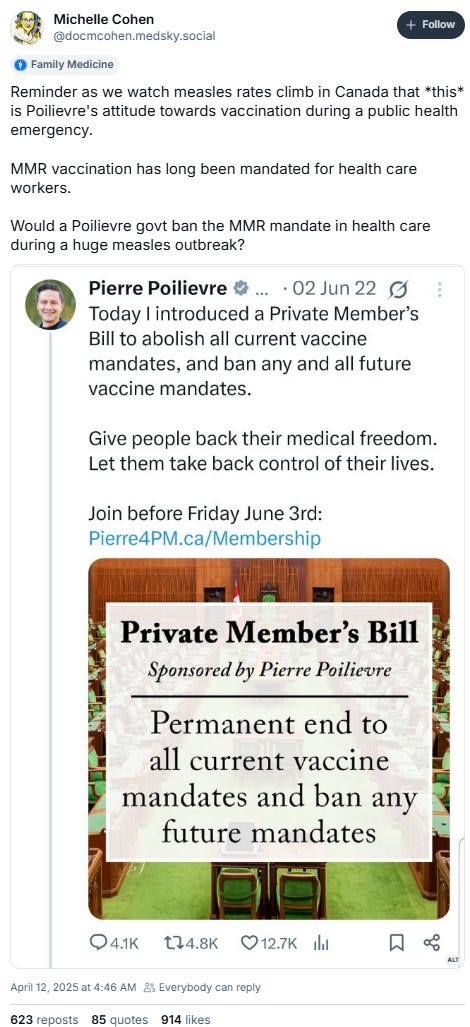
Referral
The Friendly Side of Care: Bring a Pal!
Share this link with another healthcare nerd, practitioner, or someone you feel will benefit from this information
Why? Because when you do (and they sign up), you'll earn points toward some fantastic rewards. Things like points towards a free subscription to The Other Side of Care paid content and upcoming merchandise!
Spill the Tea! ☕
Loved the Quebec story? Got a burning question about the news? Or maybe a brilliant idea for a future topic?
Hit 'reply' and let us know what you think! Your feedback helps us make 'The Other Side of the Care' even better. What's on your mind this week?


